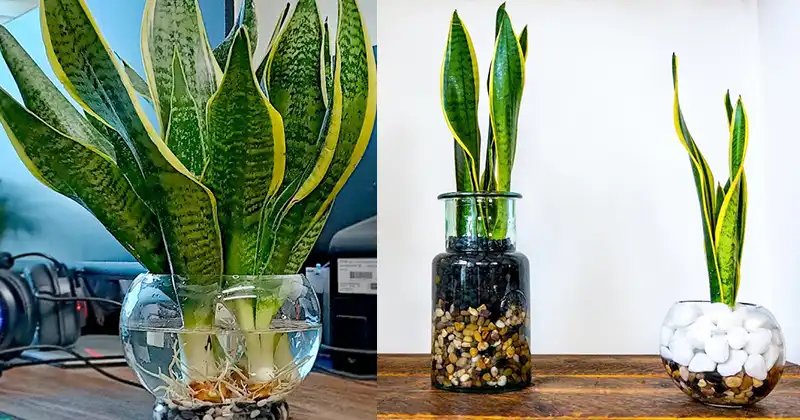Growing Snake Plants in Water: A Decorative and Low-Maintenance Approach

Snake plants, also known as Sansevieria, are popular indoor houseplants appreciated for their air-purifying qualities and low-maintenance nature. While they are typically grown in soil, an increasingly popular and visually appealing method of cultivating snake plants involves growing them in water. This hydroponic or water culture propagation allows you to showcase these unique plants in a decorative and eye-catching way. In this article, we’ll guide you through the steps of growing snake plants in water, and provide tips for maintaining their health and aesthetics.
Choosing the Right Snake Plant Cutting:
- Select a Healthy Leaf or Cutting: The first step in growing snake plants in water is choosing a healthy leaf or cutting. Look for a leaf that is free from damage or disease. If you have a mature snake plant, you can cut a leaf into sections, ensuring that each section is at least a few inches long.
Preparing the Cutting:
- Allow the Cutting to Callus: Before placing the cutting in water, allow the cut end to callus for a day or two. This step is crucial to prevent rot when submerged in water.
Setting Up the Water Culture:
- Choose a Decorative Container: The choice of container can greatly enhance the aesthetics of your water-grown snake plant. Consider using a vase, glass jar, or any decorative container that suits your home’s décor.
- Submerge the Cutting in Water: Place the cut end of the snake plant leaf or cutting into the container filled with water. Ensure that the water level is sufficient to submerge the base of the cutting, but not covering the entire leaf. This will allow the roots to develop without causing rot.
Care and Maintenance:
- Monitor the Water Level: It’s essential to keep an eye on the water level in the container. If the water evaporates or becomes discolored, simply top it up or change it to maintain a healthy environment for the plant.
- Provide Indirect Sunlight: Place the container in an area with bright, indirect sunlight. Snake plants are known for their ability to thrive in low-light conditions, making them suitable for a variety of indoor spaces.
- Root Development: Be patient, as it can take several weeks to a few months for roots to develop. You’ll start to see healthy, white roots growing from the submerged cutting.
Aesthetic Touches:
- Decorative Rocks or Pebbles: To enhance the visual appeal of your water-grown snake plant, consider adding decorative rocks or pebbles to the container. These not only stabilize the plant but also add a touch of elegance to your décor.
Maintenance Tips:
- Change the water regularly to prevent the growth of algae and bacteria, which can be detrimental to the plant.
- Keep an eye on the plant’s health. If you notice yellowing leaves or rotting roots, it may be necessary to adjust your care routine.
- Pruning may be required to remove damaged or yellowing leaves to maintain the overall health and aesthetics of the plant.
Conclusion:
Growing snake plants in water is not only a visually appealing way to showcase these beautiful houseplants but also a low-maintenance approach to their care. With the right container, a healthy cutting, and a bit of patience, you can create an eye-catching centerpiece in your home that requires minimal upkeep. Additionally, the air-purifying qualities of snake plants make them an excellent choice for improving indoor air quality. Whether placed in a water tank or adorned with decorative rocks, a water-grown snake plant can be an elegant addition to any space, adding a touch of nature to your home’s interior design.



















